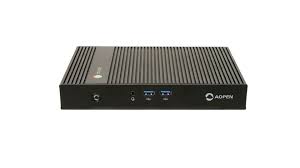Digital Signage Hardware consists of the screens, graphics, and software that you’ll need to build your digital signage network. The type of hardware needed depends on the size and type of display you want to use. In this article, we’ll discuss what equipment you need to get started in the world of digital signage, as well as how much it will cost and where you can buy it from. We’ll also look at some of the features that are worth investing in, so you can find out if it’s worth buying or if you should rent instead.
Introducing digital signage hardware:
Digital Signage Hardware is an integral part of any digital signage setup, but what does it really entail? Digital signage hardware includes everything from the display itself to the content that is being displayed on the screens. It also includes the software that is running alongside them. There are a few different types of displays you can use for your digital signage, including TV monitors, computer monitors, and HD projectors.
The type you choose will depend on your budget and the size you need for your space. Once you have found a suitable display, it’s time to think about what type of content you want to be displayed on your screen – is it going to be a video or still images? After choosing your desired content type, it’s time to consider which software solution will be best suited for your needs.
What type of hardware do you need?
Digital signage hardware is essential in any digital signage setup. Whether you are looking for a specific type of display or are just trying to get started, there are a few things that you need to know about your digital signage hardware before going out and buying anything. First, it’s important to understand that not all displays are created equal.

If you’re looking for an LCD TV, then the resolution is one of the most important factors. For example, if you’re looking for a 1080p display with a 60Hz refresh rate, then the screen size should be at least 40-inches or larger. If you’re using an LED TV as your display, then contrast ratio and brightness are important factors.
How much does it cost?
Digital signage hardware can cost anywhere from $300 way up to $1000, depending on the display size and features you want. For instance, if you want a touchscreen and 2x HDMI input, then you’ll need a device that has an MSRP of at least $1000.
Digital signage hardware is relatively inexpensive when compared with some of the other components of a digital signage system such as software and installation costs.
There are many different types of displays that are used for digital signage. These displays range from LED monitors to LCD screens, but there are also interactive touchscreens available for purchase as well.
Where can I buy it?
One of the key components of any digital signage is hardware and software. In this article, we’ll discuss what hardware you need to get your displays up and running, as well as how much it will cost and where you can buy it from. We’ll also discuss some of the features that are worth investing in.
Digital signage hardware comes in all shapes and sizes, with prices ranging from a few hundred dollars for the most basic projector right up to tens of thousands for high-end digital display systems.
For starters, if you have a budget of under $5K then your best bet is an LED projector which will give you perfect colors and contrast at a reasonably good price point.

If you want to get amazing benefits by using this link
Digital Signage Player
Conference Room Schedule Display
Digital Menu Boards
What features should I look for?
There are a few features that should be considered when looking for digital signage hardware.
- Size: The size of the display is usually determined by your needs, but it’s important to consider how much content you’ll have and if you’ll use the space for text as well as images.
- Resolution: While this isn’t an absolute requirement, higher-resolution displays can provide more detail in graphics, text, and video playback.
- Connections: When considering connections, make sure that the device can support what your software needs (e.g., HDMI). If you’re using a PC or laptop, also make sure that they meet the minimum requirements for graphics processing power (e.g., Intel® CoreTM










I do not even understand how I ended up here but I assumed this publish used to be great
There is some nice and utilitarian information on this site.
This is my first time pay a quick visit at here and i am really happy to read everthing at one place
very satisfying in terms of information thank you very much.
There is some nice and utilitarian information on this site.
Greetings! Very helpful advice in this particular article! It is the little changes which will make the most important changes. Thanks a lot for sharing!
Comments are closed.